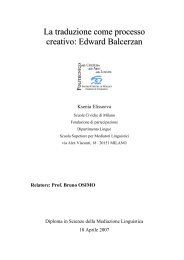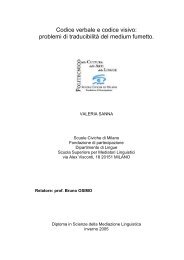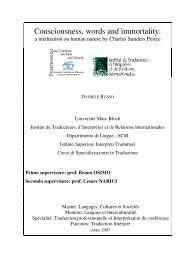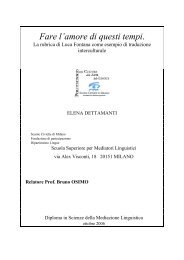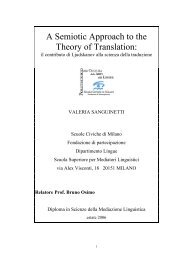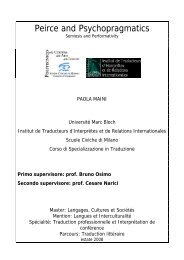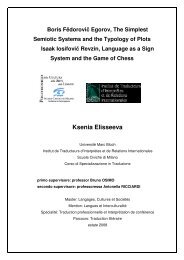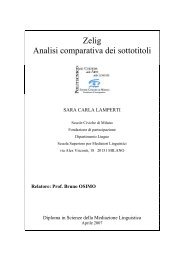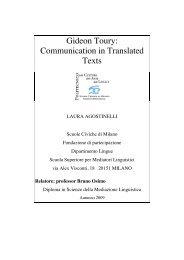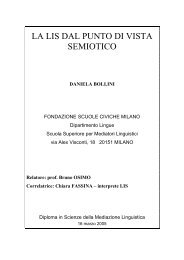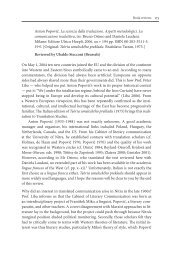Relatore: Professor Bruno OSIMO - Bruno Osimo, traduzioni ...
Relatore: Professor Bruno OSIMO - Bruno Osimo, traduzioni ...
Relatore: Professor Bruno OSIMO - Bruno Osimo, traduzioni ...
You also want an ePaper? Increase the reach of your titles
YUMPU automatically turns print PDFs into web optimized ePapers that Google loves.
individual differences and to take them into account when analyzing the data,<br />
in order to obtain more reliable and generalizable data (Bernardini 1999).<br />
All these limitations imply that verbalizations represent but a minute<br />
fraction of the total amount of mental activities occurring at any moment in<br />
time. However, this does not mean that this fraction would be somehow<br />
unimportant or uninteresting for research. Moreover, the fragmentary verbal<br />
reports can be completed with other kinds of data, such as questionnaires,<br />
process-product comparisons, eye-movements, pauses, etc. (Jääskeläinen<br />
1999).<br />
Thinking aloud is unnatural. Therefore, Ericsson and Simon recommend<br />
an initial warm-up session in which subjects are taught to verbalize their<br />
thoughts. During this practicing phase, the experimenter should feel free to<br />
disrupt the task and talk to the subject, whereas during the experiment he<br />
should be very concerned not to interfere. During warming-up<br />
subjects should learn the difference between describing what they are<br />
doing (“I now move a disk from here to there”) and thinking aloud (“since<br />
this disk is smaller than that one, I put it on another pin first” (Krahmer<br />
and Ummelen 2004: 3).<br />
They are also instructed to avoid making analytic comments about their tasks.<br />
Verbalizations are non-limited: the participants are instructed to say<br />
aloud what comes into their minds without any restrictions.<br />
3. 3. GOALS<br />
Think-aloud protocols have been used for three types of goals:<br />
1. To find evidence for models and theories of cognitive processes: Newell &<br />
Simon for instance, used TAPs for collecting data to develop and support a<br />
theory of human problem solving. Many other researchers have been working<br />
at the development of models of the cognitive processes involved in writing.<br />
One of the most known is Flower and Hayes’ model, presented in 1981. It was<br />
17



